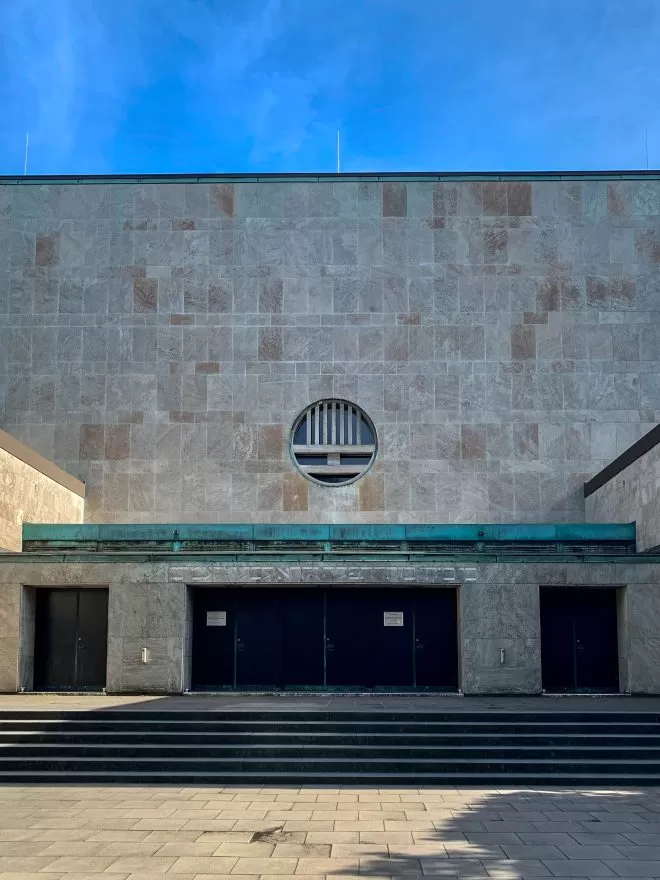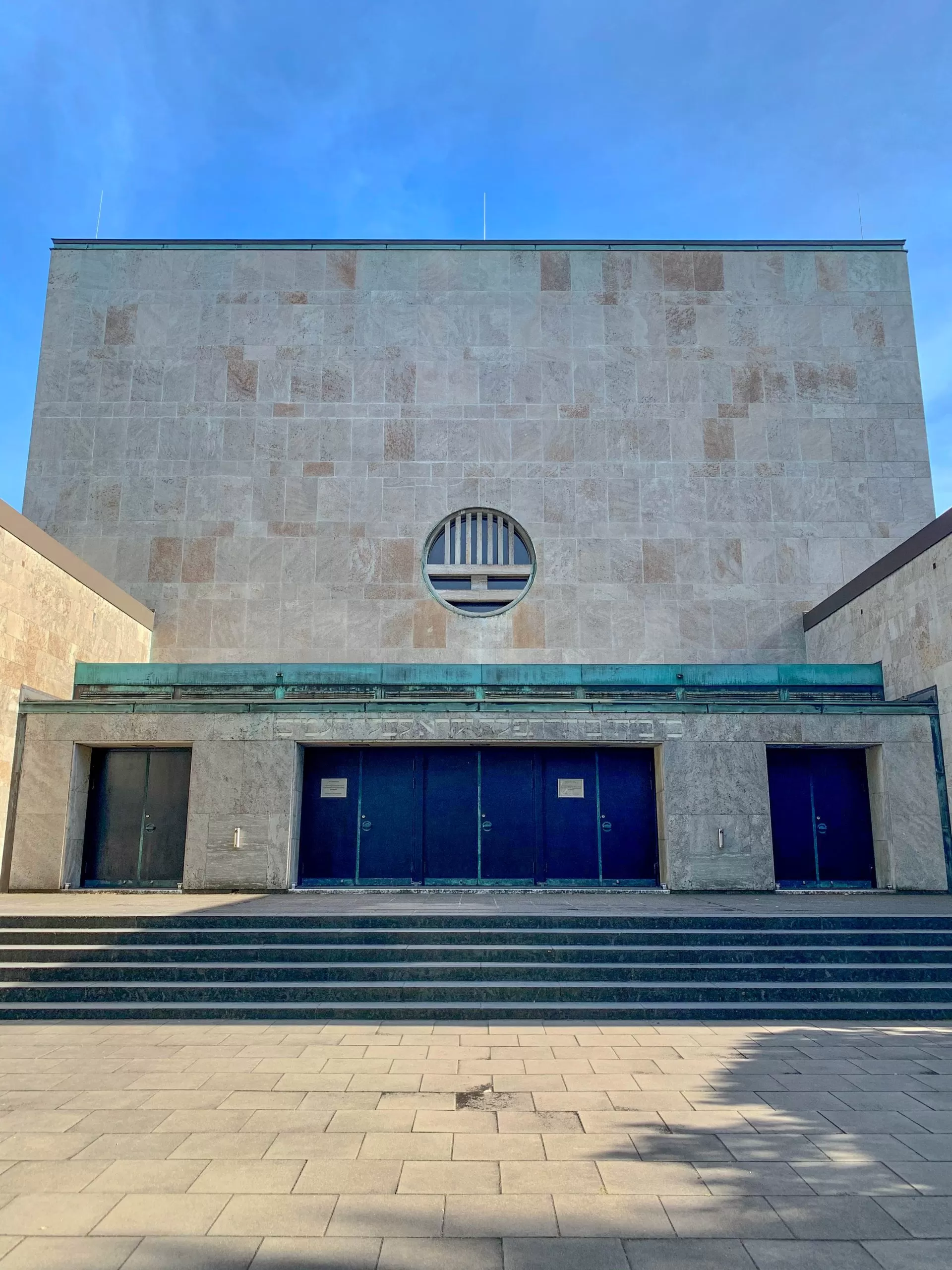
Temple Synagogue, 1930-1931. Architects: Felix Ascher, Robert Friedmann. Photo: Daniela Christmann
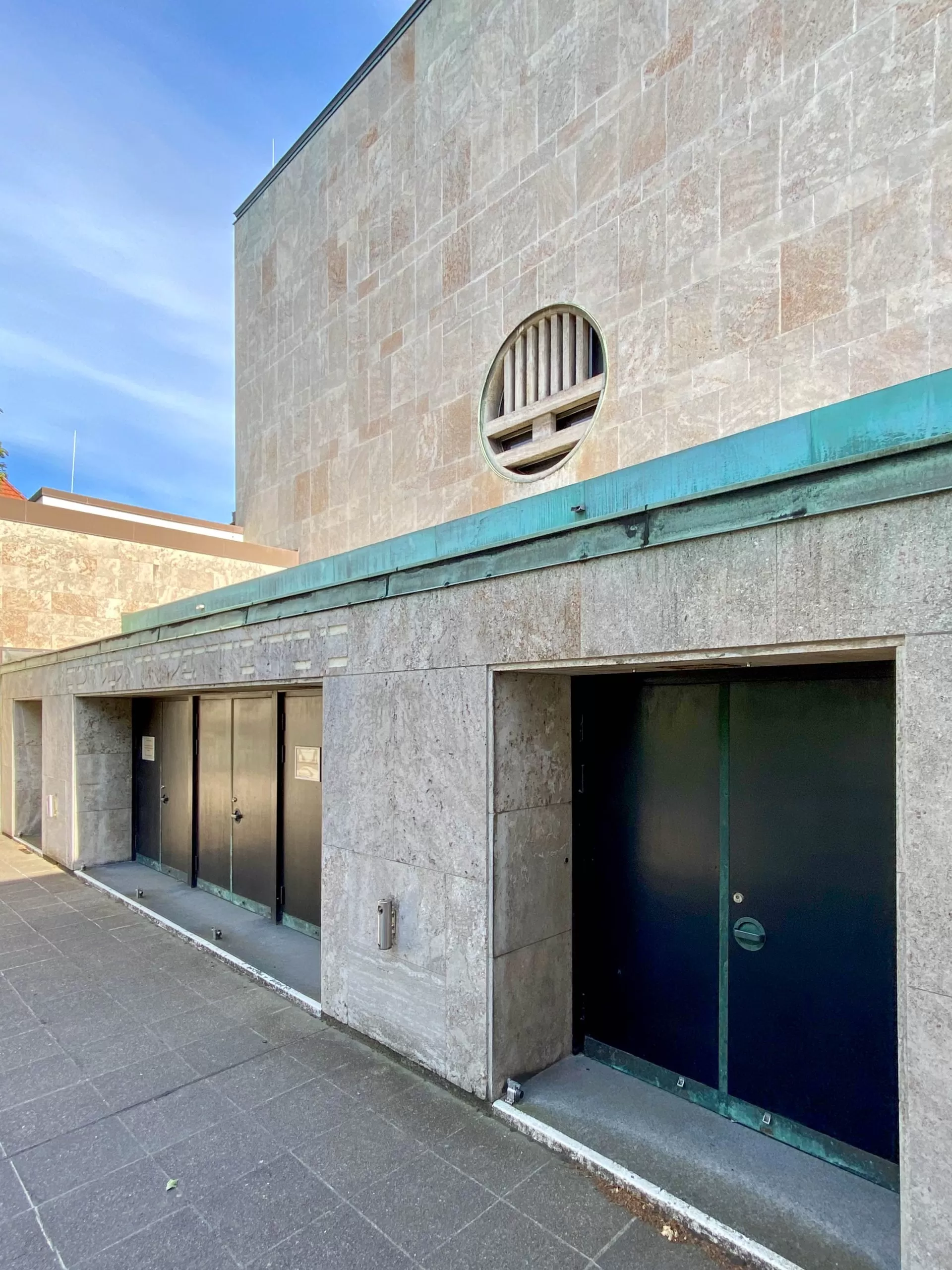
Temple Synagogue, 1930-1931. Architects: Felix Ascher, Robert Friedmann. Photo: Daniela Christmann
1930 – 1931
Architects: Felix Ascher, Robert Friedmann
Oberstrasse 116-120, Hamburg, Germany
The former synagogue of the Israelitischer Tempelverein in Hamburg-Harvestehude was built between 1930 and 1931 according to plans by architects Felix Ascher and Robert Friedmann.
Background
Founded in 1817, the New Israelite Temple Association in Hamburg saw itself as a Reform congregation.
As early as 1908, the association had decided to build a new synagogue.
However, the outbreak of the First World War delayed the planning considerably, so that a design competition could only be announced in 1929.
Winners of the competition were the architects Felix Ascher and Robert Friedmann, both members of the Jewish community.
Israelitischer Tempelverein
From the very beginning, the Israelitischer Tempelverein was concerned with a decidedly modern design.
The congregation’s building committee had already embarked on a tour of new sacred buildings throughout Germany at the beginning of the planning process.
In a retrospective article published by Siegfried Urias in the commemorative publication of 1937, it is stated that the members of the building commission had gained an impression of how a Jewish house of worship could be built in simplicity and monumentality at the same time without the usual imitation of foreign styles.
Project
The design for the new synagogue building was based on the principles of Neues Bauen: cubic building blocks, sparse decoration of the facade, cladding with travertine, symmetrical design of the overall complex with open staircase and forecourt.
Felix Ascher emphasized in his text written for the commemorative publication for the 120th anniversary of the Israelite Temple in Hamburg (Felix Ascher, Der neue Tempel, in: Bruno Italiener (ed.), Festschrift zum hundertzwanzigjährigen Bestehen des Israelitischen Tempels in Hamburg 1817-1937, Hamburg 1937, pp. 40-45) that up to that time almost all new buildings of Jewish houses of worship had been designed by non-Jewish architects.
In contrast, Ascher and Friedmann had made a point of avoiding ‘any mystical effect foreign to Judaism’ in their design.
The new temple, which cost about 560,000 Reichsmarks to build, was dedicated on August 30, 1930.
Facade
Its facade is covered with slabs of travertine.
The only decoration on the central cubic structure is a large window in the form of a stylized seven-branched candelabrum.
Above the entrance portal, the Hebrew inscription reads: “For my house shall be called a house of prayer for all nations” (Isaiah 56:7).
For the furnishing of the interior, the architects collaborated with the designer Naum Slutzky, who, among other things, designed the globe lights in the central interior.
With Friedrich Adler, another Jewish designer was involved, who, in addition to the window with the seven-branched candelabrum on the facade, also designed the inscription above the Torah shrine.
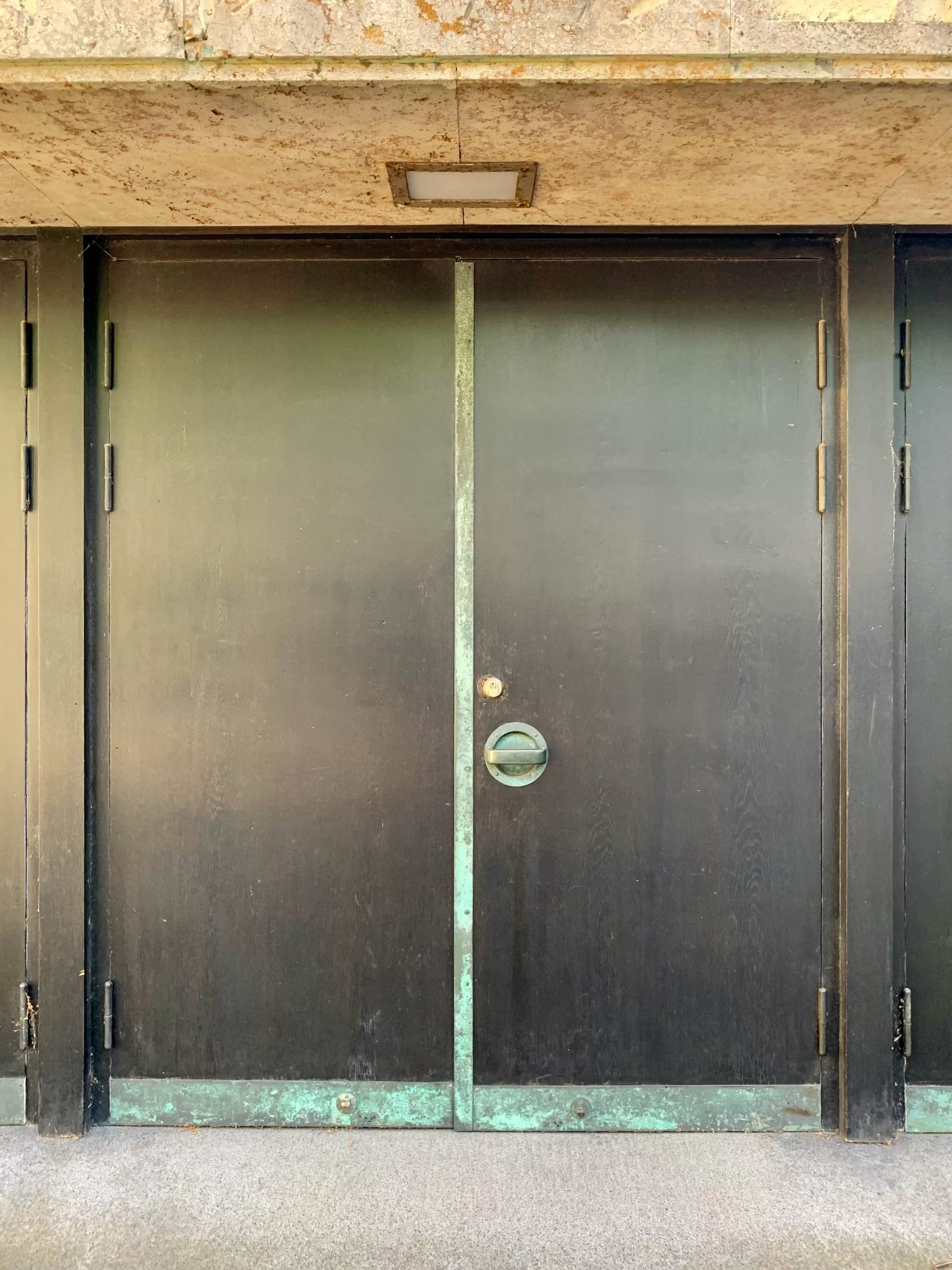
Temple Synagogue, 1930-1931. Architects: Felix Ascher, Robert Friedmann. Photo: Daniela Christmann
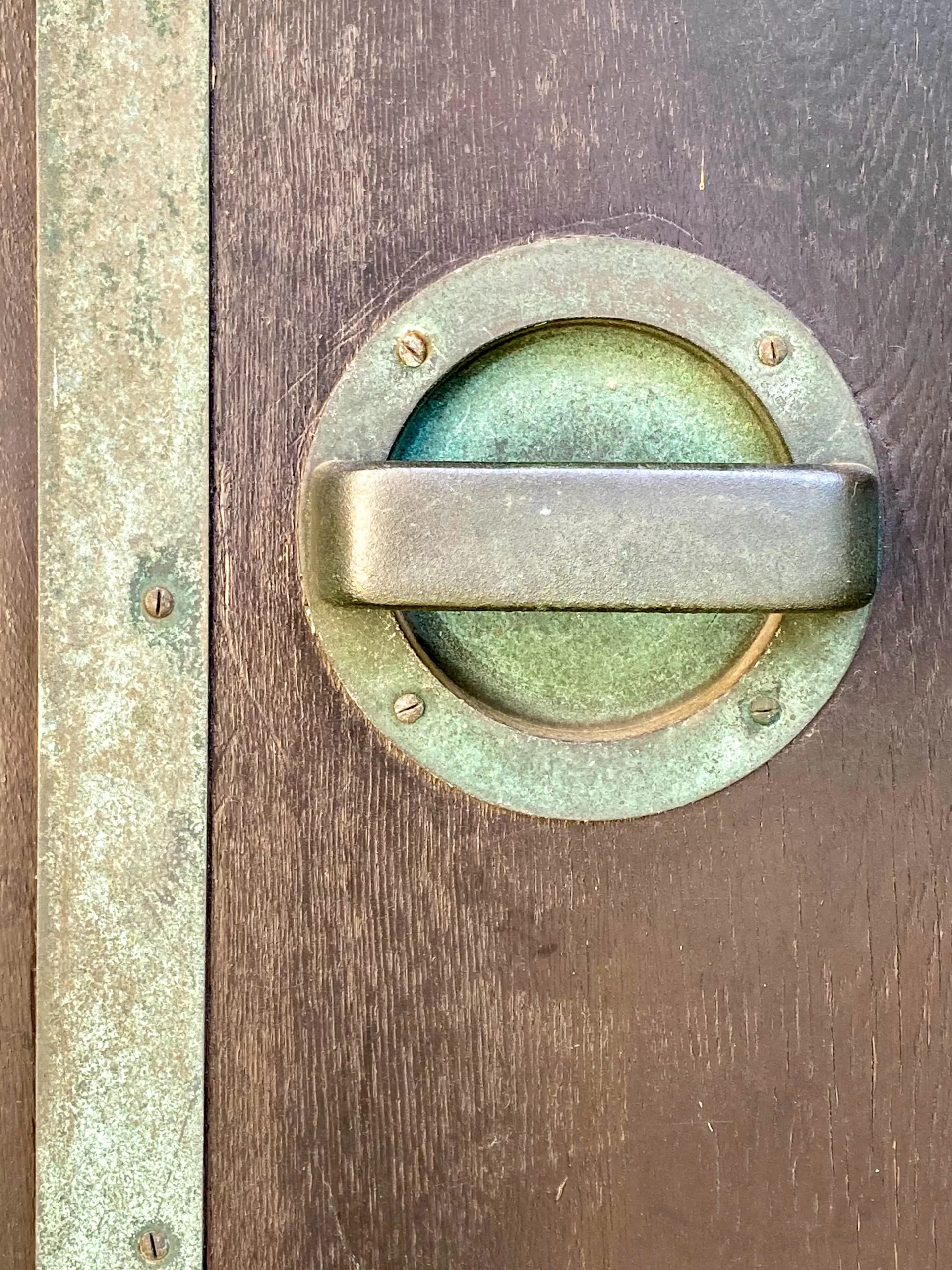
Temple Synagogue, 1930-1931. Architects: Felix Ascher, Robert Friedmann. Photo: Daniela Christmann
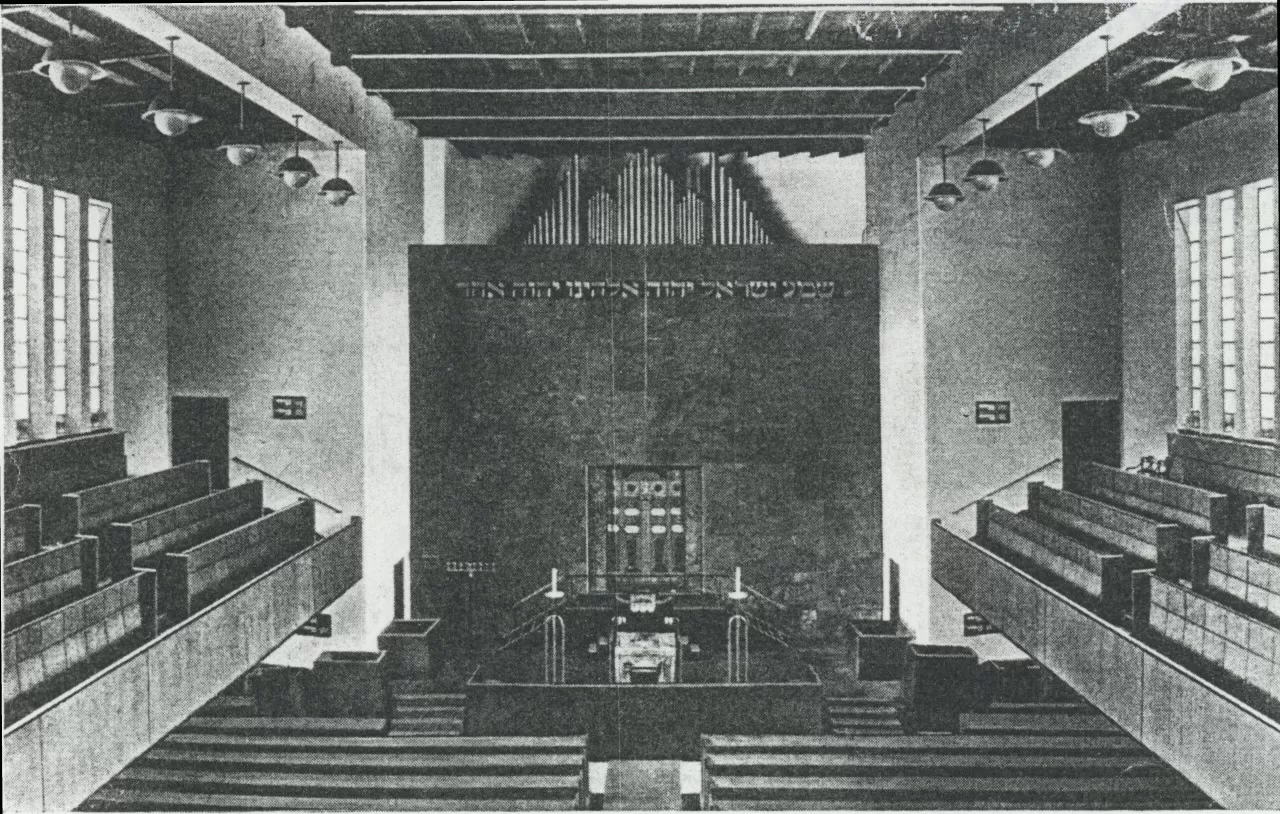
Erich Kastan, photograph of the interior of the Oberstraße Temple, Hamburg, 1937, published in: Hamburger Schlüsseldokumente zur deutsch-jüdischen Geschichte, <https://dx.doi.org/10.23691/jgo:source-87.de.v1>
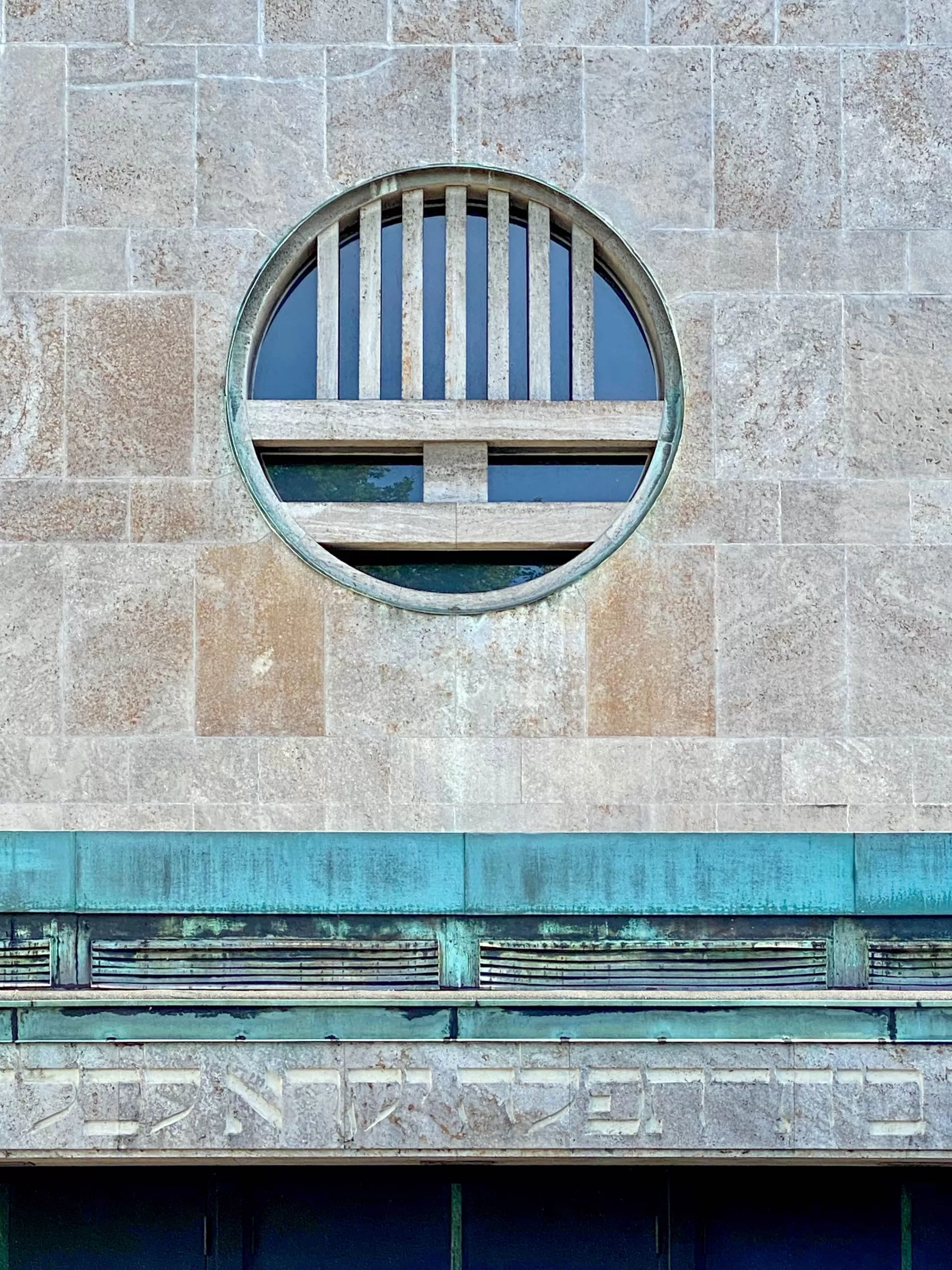
Temple Synagogue, 1930-1931. Architects: Felix Ascher, Robert Friedmann. Photo: Daniela Christmann
1938
Only a few years remained for the Jewish community to establish its community life in the new synagogue.
In 1938, the new synagogue was vandalized, desecrated, and closed during the pogrom night of November 9, 1938, and subsequently had to be forcibly sold.
Even before that night, Jewish life in the temple had largely come to a standstill.
Many members of the congregation had already emigrated before the last Chief Rabbi of the congregation, Bruno Italiener, also fled to England in 1938.
Post-war period and conversion to a recording studio
In July 1941, the building initially became the property of the Hanseatic City of Hamburg, which leased it in 1946 to the then NWDR (Nordwestdeutscher Rundfunk, predecessor of the later Norddeutscher Rundfunk).
The NDR (then still NWDR) bought the building from the Jewish Trust Corporation in 1953 and rededicated it as a broadcasting hall, today’s Rolf Liebermann Studio.
Rolf Liebermann Studio is a large recording studio named after Rolf Liebermann, the former head of NDR’s main music department.
It has borne this name since the modernization completed in 2000; before that it was called ‘Studio 10’ or ‘Großer Sendesaal des Funkhauses Hamburg’.
Since 1982, it is a listed building.
One year later a memorial by artist Doris Waschk-Balz was erected in front of the entrance to commemorate the fact that the house of prayer was desecrated but not destroyed.
Today, the gilded vaulted ceiling on the upper floor and the restored circular window in the shape of the Jewish menorah bear witness to the history of this house.

